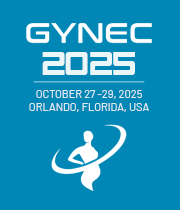Title : Anatomical and embryological basis of pelvic organ prolapse: An integrative perspective
Abstract:
Pelvic organ prolapse (POP) is a common condition affecting millions of women worldwide, particularly those in the postmenopausal age group. It involves the descent of pelvic organs, including the uterus, bladder, or rectum, into or beyond the vaginal canal due to weakening of the structural support mechanisms of the pelvic floor. Although POP is frequently approached from a clinical and surgical standpoint, understanding its anatomical and embryological underpinnings is essential for comprehensive management, prevention, and education.
Embryologically, the pelvic support structures derive primarily from the intermediate mesoderm, with contributions from the mesenchymal tissues surrounding the cloaca during early development. The levator ani muscles, essential for active pelvic floor support, arise from myotomal mesoderm and are innervated by branches of the pudendal nerve, whose neuroectodermal origins and early developmental pathway influence their anatomical placement and function. Similarly, the urogenital diaphragm, endopelvic fascia, and uterosacral and cardinal ligaments originate from condensed mesenchyme that differentiates under hormonal and mechanical influences during fetal life.
From an anatomical standpoint, the adult female pelvic floor represents a complex integration of muscular, fascial, and connective tissue components arranged in a trilaminar configuration. The pubococcygeus, iliococcygeus, and puborectalis muscles work in harmony to provide a dynamic sling, while fascial condensations such as the arcus tendineus fascia pelvis provide passive structural support. These structures are particularly vulnerable to disruption during vaginal childbirth, hormonal decline, or chronic increases in intra-abdominal pressure, which can lead to mechanical failure and prolapse.
Correlating embryological development with adult anatomy not only clarifies the etiology of POP but also offers insight into individual variations in pelvic architecture and potential predispositions to prolapse. For example, congenital connective tissue disorders or incomplete differentiation of pelvic musculature during embryogenesis may predispose certain individuals to earlier or more severe presentations of POP.
An integrated understanding of both developmental and adult anatomy is therefore essential for effective teaching, early identification of at-risk individuals, and refinement of surgical techniques. It also enhances the appreciation of the pelvic floor as a functional and developmental unit, rather than merely a mechanical support system.
In conclusion, the anatomical and embryological basis of pelvic organ prolapse provides a foundation for both preventative and therapeutic strategies. Emphasizing this integrative perspective is critical in gynecological education and in advancing personalized approaches to women’s pelvic health.



